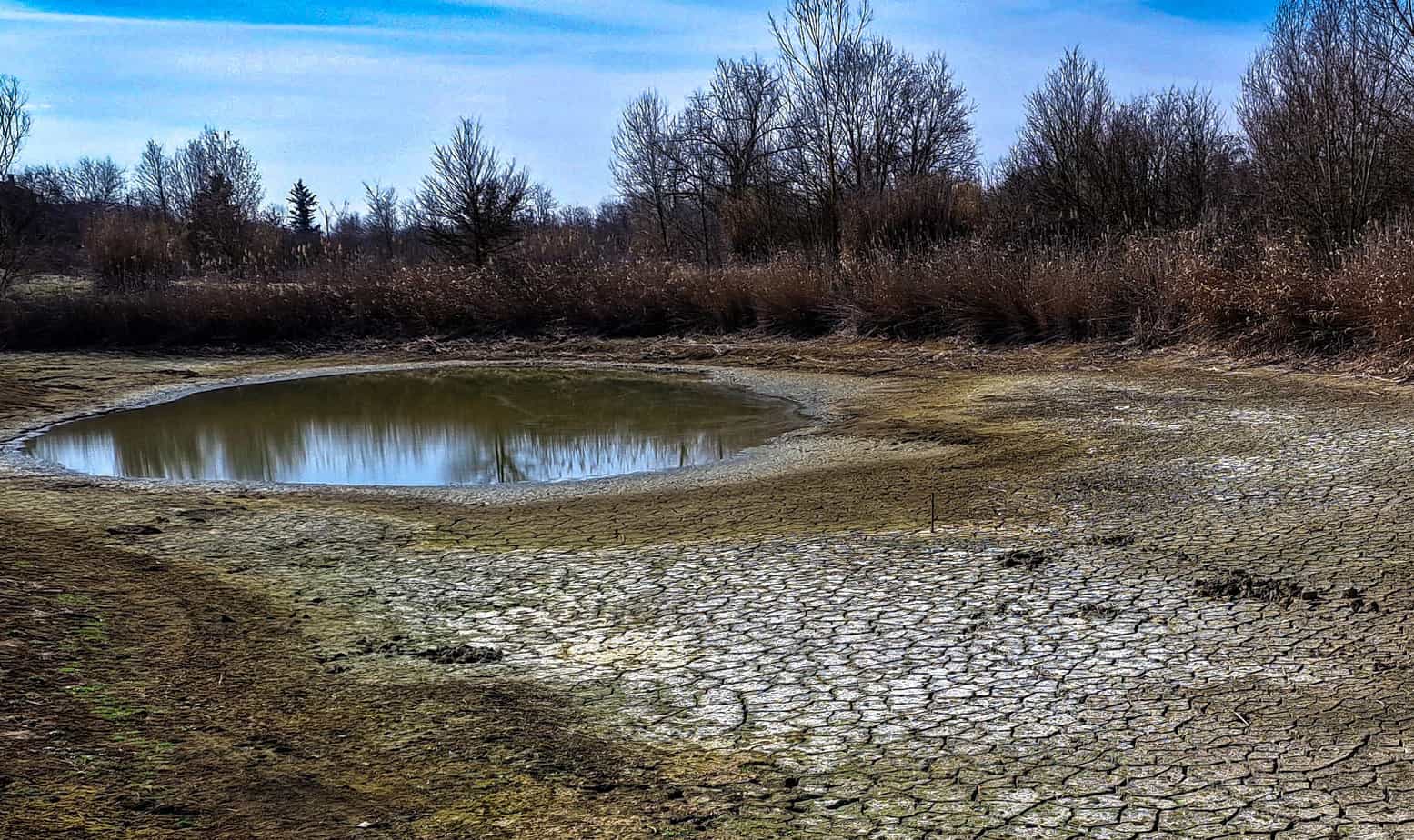Europe’s golf scene wrestles for water
The peaks of the mountains in the Aosta Valley are still covered in snow when Marco Aquilino, General Manager of the Italian Royal Park I Roveri Golf Club , looks up at them thoughtfully in early March 2023. “There wasn’t much snow this year,” he says. “We’ll have to see what the summer brings.” Scattered excavators still stand in his back, about to lay the last irrigation pipes in the golf course built in 1971 by Robert Trent Jones Sr. Royal Park I Roveri, undoubtedly one of the top ten facilities in Italy, has tackled the issue of water management this winter, renewing the entire sprinkler system for the 18 holes of the traditional course. The investment is in the higher six figures, but Aquilino knows that water will be a dominant issue in the coming years. “So far, we’re getting the water approved, but who knows what will happen if it gets even scarcer.”
Water management becomes a top issue
The availability of water is becoming a dominant issue in the golf scene. This applies not only to countries such as France and Italy, which are currently already in a major winter drought, but also to regions that golfers would have commonly associated with rain rather than drought. England for example, Switzerland, Austria or the north of Germany.
But in fact, the drought of last summer has left its mark everywhere. “I would say that water is a much bigger priority this year than it was last year, which is something we’re driving at England Golf,” sums up James Owen, sustainability manager at England Golf. “There is a concern that golf clubs could shut down without notice. You need to be prepared for that and start making long-term plans now.”
In France, the issue is even more pressing. Due to persistent drought, Pyrénées Orientales, Dombes and Bouches-du-Rhone are alreadyin “crisis” warning status, while Ardeche and the west of Versaille, as well as some other districts, are in “warning” status. But that directly affects golf courses because the ordinance here prohibits “watering gardens, putting greens, golf courses or washing cars at certain times.” It is not yet that far in the Italian Piedmont, although the Italians are also already in the grip of winter drought in some regions. State limits, however, do not yet exist for golf courses.
“We are waiting for news from the government, which plans to introduce a water plan in the coming days to encourage all stakeholders to save water,” notes Maximilian Lambert, who is in charge of the environment at the French Golf Federation. Water withdrawal restrictions, he notes, are coming sooner than 2022.
In Germany, the situation is not much different: although there are currently no new government regulations, the situation regarding water permits and the control of water withdrawal volumes has tightened considerably. A few years ago, the German Golf Association already presented a water requirement calculation for an average German 18-hole course, which, however, was still based on weather data up to the year 2000 and thus did not yet take into account the increasing drought years. The result is an average irrigation demand of 43,731 m³ of water per year per site. Just for comparison, top US plants in Arizona and Nevada with international standards also consume 700,000 m³ per year.
Is the golfer aware of the water crisis?
“Well, the water is just getting really expensive in the meantime,” is the comment of a member at Italy’s La Margara Golf Club, who was shooting rounds there in early February. “But, what can you do,” says the senior, who moved to Piedmont from St. Gallen, Switzerland, for retirement. There is still water, so his golf game is not in danger for the time being.
In fact, however, the question is being raised everywhere in Europe as to which water will be used to irrigate golf courses in the future: collected water from drainage systems and storage ponds, service water, groundwater or possibly drinking water? No one in the golf industry really likes to talk about the latter. Well aware that it is still used to some extent at least in almost all northern European countries, although this is actually frowned upon as unsustainable. However, golf facilities that shell out more than 100,000 euros, pounds or francs a year to pay their water bills certainly do exist. But it is clear to those responsible at the associations that this is not a sustainable model for the future.
Sprinkling with drinking water increasingly frowned upon
“In our last study in 2013, we found that less than ten percent of places were still using potable water. It is an essential part of our strategy to reduce this number to an absolute minimum,” explains Lambert.
In Switzerland, where the retreat of the glaciers and the associated negative consequences for the supply with water and with energy are strongly discussed in the public, the concern is also large. “The issue of water has also moved up our priority list after last summer’s drought,” explains Swiss Golf’s sustainability manager, Alicia Moulin. The Swiss are now primarily concerned with gaining a clear picture of water consumption on domestic golf courses. “We’re working on anonymously collecting water use data so we can get an overview of what the percentage of potable water is in irrigation, for example,” she notes.
Deep green golf course attracts the green fee guest
The issue of water is often viewed differently from a short-term perspective, especially in regions with a high level of tourism: In the competition for the seasonal member and the green fee guest, a deep green golf course may be an advantage. Andreas Leutgeb, President of the Austrian Greenkeeper Associationbut has concerns about the coming season: “In eastern Austria – eastern Lower Austria, Vienna, Burgenland as well as the Graz Basin – there has been little or no snow and no significant rainfall. In the alpine regions it is better, but also not as productive as before. Glacier recession also plays a role here. So we are curious to see what happens,” he refers to the coming summer. “If it doesn’t rain properly for a few days, it’s going to be tight.”
The outlook is not rosy, the tension on the European golf scene is palpable as we look ahead to the coming summer. This is especially true for those countries that have had little to do with severe water emergencies. While on the Spanish island of Mallorca or in non-European countries such as Morocco, the inclusion of recycled water in the planning of a golf course is the order of the day, this topic hardly played a role in countries such as Germany, Italy or France, also due to the significantly higher investment costs.
But times are changing. The regulations are becoming stricter. Water has become a top issue for golf associations. And this will certainly not change in the next few years.







